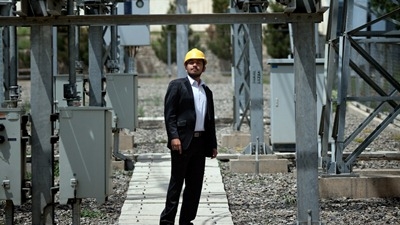Kabul, Afghanistan – Sarhady wants to bring power to his people, but he’s not talking politics. Instead, he will shimmy along high-voltage electrical transmission lines, scale sky-high towers, or do whatever it takes to keep Kabul’s newly refurbished power network functioning properly.
At 22, Sarhady is part of a new generation devoted to power production in Afghanistan. He recently signed on as part of a high-voltage engineering maintenance team that will serve Kabul, and the newly commercialized power utility, Da Afghanistan Breshna Sherkat (DABS). The Emergency Power Rehabilitation Project, launched in 2004 and financed by the World Bank and Afghanistan Reconstruction Trust Fund (ARTF), is behind this development.
“I want to give power to my people,” Sarhady says. “Everyone knows power is really important in life. It brings brightness and I am the provider of brightness to the life of my people.”
While practicing his high-wire skills with a dozen young men recently, Sarhady said he is determined to be part of his country’s transformation. “Now, we are getting electricity almost 24 hours a day here, but before it was three or four hours, every two nights or less. This is a big change.”
It’s estimated that just eight years ago, public access to power in all of Afghanistan was only six percent, one of the lowest rates in the world. Only some 234,000 customers were officially connected to the public grid, of which about 30 per cent lived in Kabul. Other provinces had even less access, and rural areas were virtually unserved.
The power network was in a dilapidated state and in urgent need of rehabilitation. But power service was critical for the country’s economic growth, social equity, and to meet development goals.

